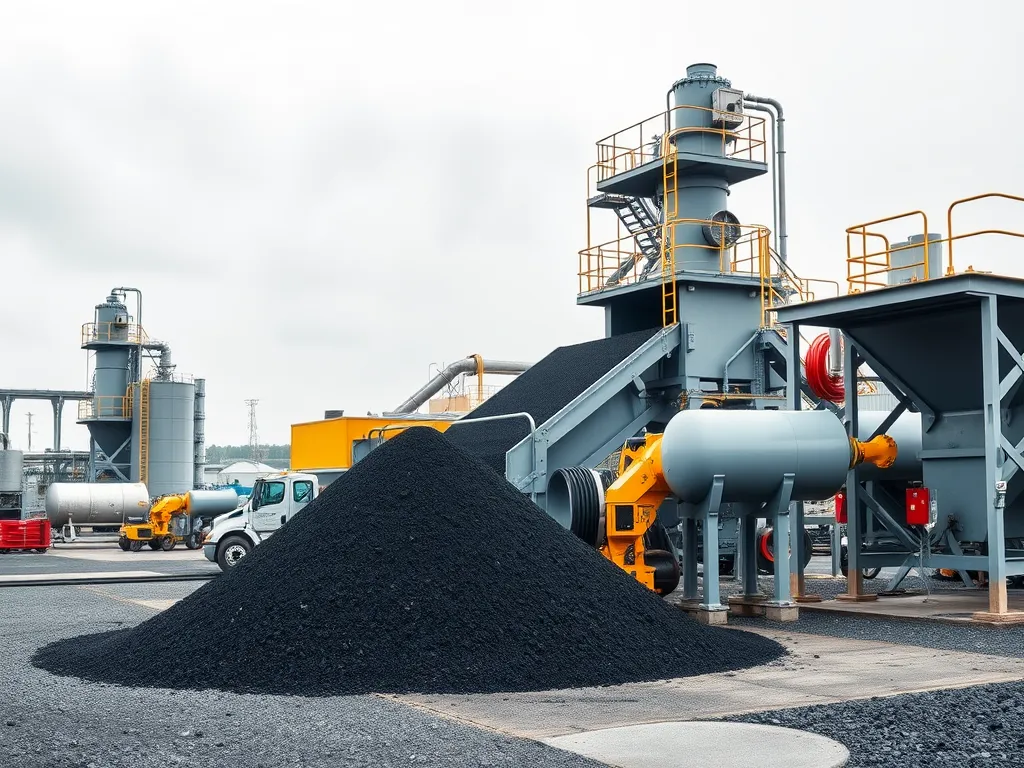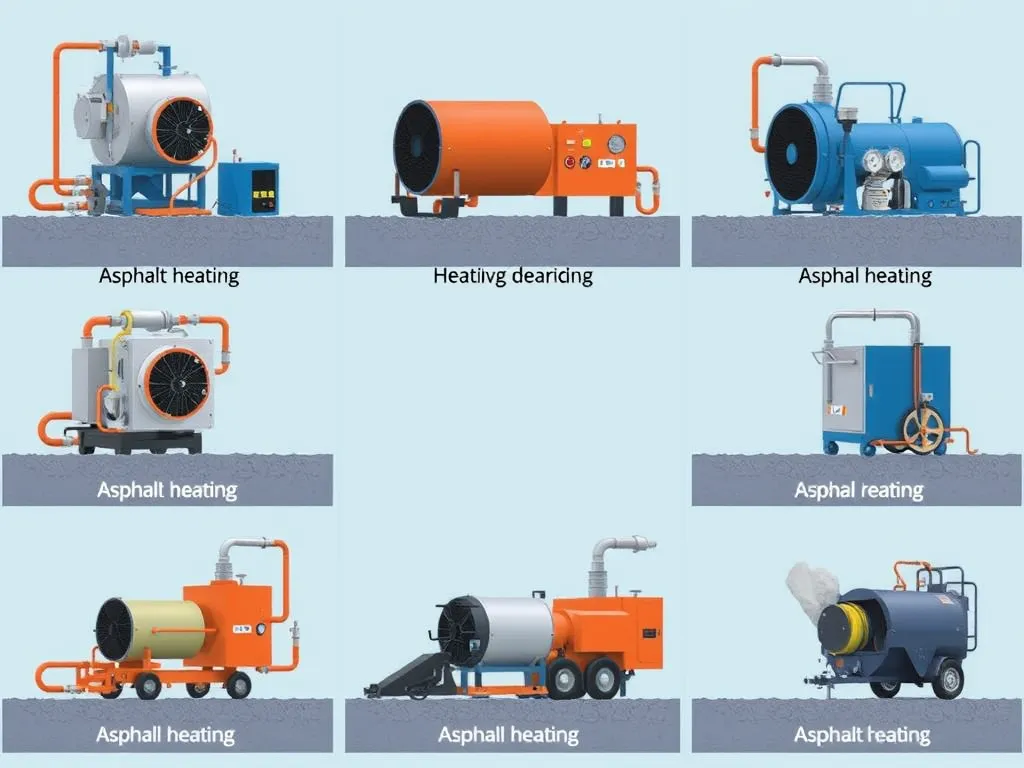Bitumen Lifespan Considerations: Maximizing Durability in Asphalt Applications
Published on: September 22, 2025 | Last Updated: April 14, 2025
Written By: George Voss
Bitumen lifespan considerations focus on extending the service life of this petroleum-based binder in asphalt roads and roofing systems. The material typically lasts 10-25 years in pavement and 15-30 years in roofing, depending on environmental stress, installation quality, and maintenance practices. Seven key factors dominate performance: temperature swings, UV exposure, traffic loads, layer thickness, drainage efficiency, chemical resistance, and repair frequency.
This article breaks down bitumen durability across multiple applications. We compare road vs. roofing performance, analyze climate impacts like freeze-thaw cycles, and detail cost-effective maintenance methods. You’ll find data on lifespan extension techniques, material comparisons with polymer-modified alternatives, and real-world examples of surfaces lasting 30+ years through proactive care.
Contents
- Understanding Bitumen Longevity in Asphalt Systems
- Key Factors Affecting Bitumen Lifespan
- Maintenance Strategies for Extended Bitumen Durability
- Performance Comparison: Bitumen Vs Alternative Materials
- Environmental Impacts on Bitumen Performance
- Economic Implications Of Bitumen Longevity
- FAQs: Bitumen Lifespan Considerations
- Closing Thoughts
- Additional Resources for You:
Understanding Bitumen Longevity in Asphalt Systems
Bitumen acts as the glue in asphalt mixes. This black, sticky stuff comes from crude oil. It binds stones and sand to form strong road beds and roof sheets. Its thick nature blocks water and stays soft in cold temps.
What is Bitumen and Its Role in Asphalt?
Bitumen makes up 5-10% of asphalt by weight but does 90% of the work. It coats each stone grain, creating a flex layer that bends under weight. Roads with PG 64-22 grade (common in mid-US) handle temps from -22°F to 140°F. Newer grades like PG 76-22 add more heat strength.
Typical Lifespan Expectations for Bitumen Products
Bitumen life spans shift based on use, mix, and care. Roads last longer than roofs due to less sun contact. Proper install adds 3-7 years to any project.
How Long Does Bitumen Last in Road Surfaces?
Road bitumen lasts 15-25 years. High-traffic lanes (50k cars/day) need resurfacing every 12 years. Cold zones see 30% faster wear due to freeze cycles. A 2-inch overlay can add 8-12 years if done early.
Life Expectancy of Bitumen Roofing Membranes
Roof sheets last 10-20 years. APP (plastic-based) types handle sun better than SBS (rubber-blended). White coats add 5 years by bouncing UV rays. Foot traffic cuts life by half if not paved with walk pads.
| Use Case | Avg. Lifespan | Key Factors |
|---|---|---|
| Road Surfaces | 15-25 years | Traffic load, climate, base layer |
| Roof Sheets | 10-20 years | UV exposure, foot traffic, slope |
These life spans set the stage – but real-world results hinge on six key forces. Up next: what eats away at bitumen over time.
Key Factors Affecting Bitumen Lifespan
Bitumen longevity varies based on physical conditions, building tactics, and how it’s put to work. From scorching highways to rooftop foot traffic, four main groups shape how long this vital material holds up.
Environmental Influences
Bitumen faces constant battles against natural forces. Two primary threats cut short its working years.
Temperature Extremes and UV Radiation
Roads hitting 140°F in summer sun trigger bitumen softening, while -30°F winters make it brittle. Daily thermal cycling creates micro-cracks. UV rays break chemical bonds through oxidation – roofing membranes can lose 40% flexibility within 10 years without UV stabilizers. PG (Pavement Grade) binders help, with PG 64-22 handling temps from -22°F to 64°F.
Moisture Exposure and Freeze-Thaw Cycles
Water intrusion causes 60% of asphalt failures. Bitumen lifts (layers) with poor drainage see lifespan drop by 3-5 years. Frost action splits pavements when trapped water expands by 9% during freezing. Roofing systems using torch-applied SBS-modified bitumen show 35% longer survival in wet climates vs traditional hot-mop installations.
Construction-related Factors
How crews put down bitumen impacts its staying power as much as Mother Nature. Two job-site choices make or break long-term results.
Installation Quality in Asphalt Paving
Roads compacted below 92% density fail 50% faster. Temperature control matters – laying mix below 275°F causes poor bonding. For roofing, torch temperatures above 390°F create proper membrane fusion. A 1/8″ thickness variation in road lifts allows water pooling, cutting bitumen life by 2 years.
Material Thickness and Layer Composition
High-traffic roads need 4″ minimum bituminous layers – thin 2″ surfaces crack within 3-5 years. Roofing systems with two-ply modified bitumen last 15-20 years vs single-ply’s 8-12. Base layers matter: 6″ crushed aggregate under asphalt adds 30% to road lifespan vs dirt subgrade.
Usage Patterns
What happens on top of bitumen products dictates their clock speed. From truck axles to work boots, surface loads take tolls.
Traffic Loads on Bitumen Roads
Each 80,000 lb truck pass does as much harm as 9,500 cars. Roads handling 1 million ESALs (Equivalent Single Axle Loads) need polymer-modified bitumen to hit 15-year targets. Unmodified pavements under heavy traffic show rutting in 3-7 years.
Foot Traffic on Roofing Membranes
Walking on bitumen roofs 20+ times yearly cuts lifespan from 25 to 15 years. Punctures from tools cause 80% of moisture issues. Install walkpads in high-access zones – mineral-surfaced cap sheets handle footfalls 50% better than smooth membranes.
While these factors set initial limits, smart upkeep tactics can push bitumen products toward their maximum possible working years. Upcoming sections break down proven methods to stretch bitumen’s clock.

Maintenance Strategies for Extended Bitumen Durability
Proper maintenance directly impacts bitumen longevity, often stretching service life 30-50% beyond baseline expectations. Strategic care combats weathering, oxidation, and structural stresses that degrade asphalt and roofing systems.
Proactive Care for Asphalt Surfaces
Road surfaces require targeted interventions to preserve bitumen durability. Unaddressed cracks or contamination accelerate binder breakdown through water infiltration and chemical attacks.
Regular Crack Sealing Techniques
Seal cracks ≤0.25″ wide within 48 hours of detection using PG 64-22 modified bitumen or rubberized emulsions. This prevents 80% of moisture penetration that weakens aggregate bases. For larger fissures (>0.5″), rout-and-seal methods using hot-applied crack fillers extend repair effectiveness by 7-10 years.
Surface Cleaning and Debris Removal
Pressure wash pavements quarterly at 2,500-3,000 PSI to remove oil slicks, brake fluid, and leaf litter. These substances soften bitumen binders, reducing cohesion by 15-20% annually. For roofing, clear gravel ballast every 3-5 years to inspect underlying membranes.
Roof Maintenance Best Practices
Bitumen roofing membranes demand specialized care to prevent UV degradation and thermal splitting. Annual inspections catch 90% of premature failures in built-up roofing (BUR) systems.
Membrane Inspection Schedules
Conduct infrared scans every spring to detect wet insulation pockets. Probe-test seams and penetrations biannually – delamination signals require immediate torching repairs with SBS-modified bitumen sheets. Document all blisters ≥2″ diameter for priority attention.
Flashing and Edge Protection
Re-bed metal flashings every 8-12 years using ASTM D2626 asphalt roof cement. Install 6″ wide polyester reinforcement strips at parapet joints – critical areas accounting for 43% of membrane failures. Extend edge metal ¾” beyond roof planes to divert water runoff.
Damage Prevention Measures
Preemptive actions shield bitumen from external aggressors. Chemical exposure and biological growth account for 22% of premature asphalt deterioration in temperate climates.
Chemical Exposure Management (De-icing Salts/Oils)
Limit sodium chloride use to <15 lbs/1000 sq ft annually. Switch to calcium magnesium acetate (CMA) de-icers when temps drop below 15°F – reduces bitumen embrittlement by 40%. Apply coal-tar sealcoats every 3 years on parking areas to resist gasoline/oil penetration.
Vegetation Control Near Surfaces
Maintain 12″ clearance between plantings and asphalt edges. Root barriers (30 mil HDPE) prevent membrane punctures from shrubs like Juniper or Bamboo. Treat moss colonies with zinc sulfate strips – 10x less abrasive than manual scraping.
While these strategies boost bitumen performance lifespan, material selection also plays a pivotal role. Next, we analyze how bitumen stacks up against modern polymer alternatives in extreme conditions.
Also See: Asphalt Cooling: Best Practices for Asphalt Cooling Techniques
Performance Comparison: Bitumen Vs Alternative Materials
Material choices directly impact project durability and costs. We analyze how standard bitumen stacks up against modern alternatives across key applications.
Bitumen Vs Polymer-modified Asphalt
Standard bitumen pavements typically last 7-12 years under moderate traffic. Polymer-modified mixes (PMAs) with SBS or APP additives extend service life to 15-20 years. PMAs handle wider temperature ranges (-40°F to 176°F) versus standard PG 64-22 bitumen’s -22°F to 158°F limits. While PMAs cost 30-50% more upfront, reduced maintenance needs often justify the investment for high-traffic routes.
Bitumen Roofing Vs EPDM/TPO Systems
Built-up bitumen roofs average 15-25 years with proper care. Single-ply EPDM rubber and TPO membranes often reach 30-50 years. The synthetic options better resist UV degradation (losing just 0.5% tensile strength annually vs bitumen’s 2-3%). Bitumen remains popular for low-slope roofs due to lower material costs ($2.50-$5/sq ft vs $4-$12/sq ft for synthetics) and easier spot repairs.
Longevity in Different Climate Zones
Bitumen lifespan fluctuates sharply with location. In USDA Zone 5 (Great Lakes), freeze-thaw cycles can shorten road surface life by 40% compared to Zone 9 (Southwest). Coastal regions see faster membrane aging due to salt spray and humidity. Modified bitumen formulations now target specific climates – high-SBS content mixes for cold zones, APP-dominated blends for intense sun exposure.
Material performance ties directly to environmental stressors – a reality shaping next-gen asphalt technologies. Upcoming sections explore how ozone exposure and thermal shifts accelerate surface breakdown.

Environmental Impacts on Bitumen Performance
Bitumen faces harsh tests from nature. Weather shifts, air quality, and heat changes shape how long it lasts. These forces break down the binder over time, cutting road and roof life.
Effects Of Ozone Degradation
Ozone gas eats at bitumen’s core. This air pollutant speeds aging by splitting key bonds in the binder. Roads in cities with heavy traffic show cracks 2-3 years sooner than rural routes. Roofs in high-ozone zones lose 15-20% of their life span.
| Ozone Level (ppm) | Lifespan Drop |
|---|---|
| 0.05 | 10% |
| 0.08 | 18% |
| 0.12 | 25% |
Thermal Expansion/contraction Challenges
Bitumen swells in heat, shrinks in cold. This push-pull strains roads and roofs. Daily temp swings cause small cracks that grow over time. In desert zones, surface temps hit 160°F – leading to rutting. In cold regions, -30°F weather makes bitumen brittle.
| Temp Swing (°F) | Crack Risk |
|---|---|
| 50+ | High |
| 30-50 | Medium |
| <30 | Low |
Sustainable Maintenance Approaches
New methods fight nature’s wear. Recycled asphalt (RAP) mixes with fresh bitumen to cut waste. Cool pavements reflect sun rays, lowering surface heat by 10-15°F. Bio-based sealants protect roofs without harsh chems. These steps add 5-8 years to bitumen life.
- Reuse 90% of old road mix
- Apply reflective coats every 3-5 years
- Use plant-based binders
Smart care keeps bitumen strong – but costs matter too. Next, we break down the money side of lasting pavements and roofs.
Economic Implications Of Bitumen Longevity
Bitumen lifespan directly impacts project budgets and infrastructure planning. Every extra year of service life cuts long-term costs by 8-12% for roads and 15-20% for roofing systems. Smart maintenance choices today prevent costly rebuilds tomorrow.
Cost-benefit Analysis Of Preventive Maintenance
Sealcoating asphalt every 3-5 years costs $0.15-$0.25 per square foot but extends bitumen lifespan by 40-60%. Compare this to full-depth repairs averaging $3.50-$7.00 per square foot. Agencies using crack sealing programs report 35% lower rehabilitation costs over 20-year periods. Roofing membranes receiving biannual inspections last 22-28 years versus 15-18 years with reactive fixes.
Lifecycle Costing for Infrastructure Projects
The Minnesota DOT’s 2023 study found bitumen pavements designed with Life Cycle Cost Analysis (LCCA) methods outlast conventional designs by 7 years. Key inputs include: • Traffic ESALs (Equivalent Single Axle Loads) • PG binder grades (e.g., PG 64-22 vs PG 76-28) • Climate zone adjustments (AASHTO M 323) A 20-year lifecycle plan might budget $50/sqm upfront vs $80/sqm for delayed maintenance. Modified binders add 12-18% initial cost but slash long-term expenses through enhanced bitumen durability.
Urban planners now prioritize recycled asphalt pavement (RAP) mixes containing 20-40% reclaimed bitumen. These blends meet ASTM D4886 specs while trimming material costs by $12-$18 per ton. Warm-mix asphalt technologies further boost sustainability, reducing production temps by 50°F and cutting CO₂ emissions by 30%.
Understanding these economic factors sets the stage for evaluating environmental impacts on bitumen performance. Next, we’ll examine how ozone levels and thermal stress alter material behavior.

FAQs: Bitumen Lifespan Considerations
How Long Does a Bitumen Roof Typically Last?
A bitumen roof generally lasts between 10 to 20 years, depending on factors such as installation quality, environmental conditions, and maintenance practices. Proper care and the use of UV reflective coatings can extend its lifespan significantly.
When Should Bitumen Roofing Be Replaced?
Bitumen roofing should be considered for replacement when signs of significant wear appear, such as widespread leaks, extensive cracking, or a loss of flexibility. Typically, replacement is recommended once the roof has reached its expected lifespan, usually around 15 to 20 years, unless serious problems arise earlier.
Can Proper Maintenance Double Bitumen Service Life?
Yes, proper maintenance can potentially extend the service life of bitumen products by 30-50%. Regular inspections, crack sealing, and proactive repairs significantly reduce deterioration, allowing the material to perform optimally for a longer period.
Closing Thoughts
Bitumen plays a crucial role in both road surfaces and roofing systems. Understanding its lifespan is vital for planning maintenance and replacement. Factors like environmental conditions, construction quality, and usage patterns all influence its durability. Regular maintenance, from crack sealing to inspections, can significantly extend bitumen’s life.
When comparing bitumen with alternatives, it’s clear that while other materials may offer some advantages, bitumen remains a strong contender due to its cost-effectiveness and accessibility. By choosing the right materials and applying sound practices, you can maximize the lifespan of your asphalt applications.
For more insights into asphalt and bitumen, make sure to check out Asphalt Calculator USA.


